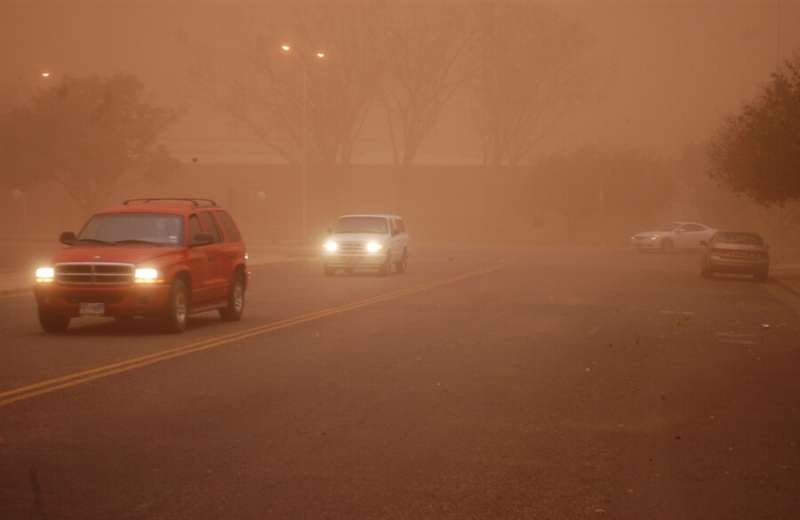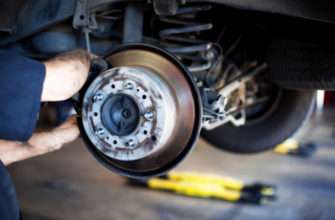Nothing beats an awesome cruise along a gorgeous stretch of highway while enjoying some equally gorgeous weather. However, the simple truth is that drivers aren’t going to be blessed with perfect conditions every time they hit the road.
When the weather takes a turn for the worse, the do’s and don’ts of driving must also change. Depending on the weather conditions, a driver may need to make any number of adjustments to safely proceed and recover from emergency situations. In this article, we’ll look at 8 tips for driving safely in bad weather.
8 Tips For Driving Safely In Lousy Weather
1. Driving In Heavy Rain
For many drivers, their first reaction when encountering heavy rain while driving is to make sure that they’re easily seen by other motorists. It’s a solid plan, but some drivers take it too far. It’s alarming just how many drivers still think the appropriate thing to do when driving in heavy rain is to turn on their hazard lights.
In short, it’s not the right thing to do. In fact, in many states, it’s actually against the law. Hazard flashers are meant to notify other drivers of an actual hazard in the roadway. And heavy rain is not considered a hazard.
The same rule applies to rear fog lights if your vehicle is equipped with them. The drivers behind you could mistake your rear fog lights for brake lights and slam on their own brakes in turn. That creates a potential pileup hazard for everyone around you. Instead, the second it starts to rain, simply turn on your headlights. Not only will this allow other motorists to see your vehicle more clearly. But you’ll also be able to see the road better.
Another common mistake many drivers make is to leave their cruise control on while driving in the rain. That’s a bad idea. When you’re not using cruise control, you are naturally applying and relieving pressure on the gas pedal to stay at the posted speed limit.
In turn, your vehicle’s weight is constantly being shifted, and that means your car has better traction. This is especially true on wet and slippery roads, where you want the maximum amount of traction possible. So, when the raindrops start hitting your windshield, turn off your cruise control.
One of the biggest hazards that comes with driving in heavy rain is hydroplaning. This occurs when your tires travel over standing water and the liquid actually lifts your tire off the payment, acting as a kind of lubricant. If you find yourself hydroplaning, your first reaction might be to counter-steer in what you think is a safe direction. Don’t do it!
Your tires are simply going to turn on top of the water and you’ll continue to slide in a straight line—at least until your tires meet pavement again, and then your vehicle will want to spin hard in whatever direction you’ve got the wheels turned. Instead, keep your wheel straight and simply let off the accelerator. If you must apply the brakes, slowly and steadily apply pressure to your brake pedal—don’t slam on it.
It doesn’t take much standing water to hydroplane, so sometimes it can be hard to see before it’s too late. In other cases, standing water can be spotted ahead of time, and that water can be quite deep. If you come upon deep water, don’t risk driving through it! Driving through deep water could potentially ruin your vehicle’s electrical components. Worse yet, deep, moving water could actually sweep your vehicle away with life-threatening consequences.
2. Driving In The Rain At Night
Driving in the rain at night takes all of the hazards and challenges discussed above and adds in the extra element of even poorer visibility. When rain hits your windshield, the droplets act like mini-magnifying glasses that can refract light.
That light refraction can temporarily blind you while driving. To minimize this effect, fight the urge to turn on your high beams while driving in rain. Keeping your headlights pointed as low as possible will minimize the amount of light hitting those droplets on your windshield.
Another great tip for driving in rain (be it during the day or night) is to coat your windshield with a hydrophobic treatment like Rain-X. This will prevent water droplets from sticking to your windshield. Using a hydrophobic washer fluid will also help maintain a thin barrier on your windshield.
The most obvious tip for driving safely in the rain is to make sure that your windshield wipers are in good condition. If they’re cracked or torn, install new blades as soon as possible. Regardless of condition, you should plan to swap out blades at least once a year. Finally, if the rain is just coming down too hard and you’re genuinely concerned that you won’t be able to proceed safely. There’s no shame in pulling over and riding the storm out.
3. What To Do If You Skid
If your vehicle starts to skid while driving, it can be a pretty frightening experience. But, by keeping a level head and initiating some simple recovery methods, you can minimize the danger and give yourself the best odds for getting out of the situation safely.
First off, understand that if you start to skid, you’re likely driving too fast for the given conditions. So, the first thing you need to do is take your foot off the accelerator. You might be tempted to slam on your brakes when your car starts to skid. But doing so will only cause you to lose more control and skid even more.
Some schools of thought (especially among motorists who use manual transmissions) suggest that you should also shift your vehicle into neutral when you start to skid. That’s also a bad idea. Shifting will require you to take one hand off the steering wheel, minimizing the “feel” and control you’ll have over your car.
Skidding out of control is nerve-wracking, especially if you’re skidding toward an object like a tree or another car. This brings us to our next tip. If you’re skidding toward an object, you should focus on where you want your car to go and not the actual object itself.
Studies have shown that when you focus on something specific while trying to avoid it, you’ll subconsciously steer toward it. So, if you don’t want to hit that other car, don’t look at it! Instead, focus on an open patch of road and work toward getting your vehicle to that spot.
4. Driving In Fog
Another common challenge drivers face is driving in thick fog. The bottom line is that fog is going to drastically reduce your visibility which, in turn, will reduce the amount of time you have to react to hazards. So, the first tip for driving in fog is to slow down! Driving at normal speed is a recipe for disaster. In fact, if the fog is particularly thick, consider pulling over and waiting for the fog to lift.
As we’ve mentioned, fog will cut down on your visibility, so it helps if you can rely on your other senses to drive safely. Turn off your radio and roll your windows down. You’ll be able to hear what’s going on around you and that increase in hearing can partially make up for what you’ve lost in sight.
Like driving in any other hazardous condition, a motorist might be tempted to turn on their high beams when driving in thick fog. The thought process is “the brighter my lights, the more I’ll be able to see, right?” The truth is, those bright lights will simply reflect off the tiny water droplets that make up fog, reducing your visibility even more. Instead, keep your low beams on.
When driving in heavy fog, motorists have a natural tendency to float toward the centerline of the road. This creates a potential risk of a head-on collision. If you find yourself driving in fog, fight the urge to hug the center and stick to the outside, solid lane marker in order to avoid motorists coming from the other direction.
5. Black Ice
Driving in rain and fog is dangerous enough, but when you add extremely low temperatures to the mix the threat level goes up even more. One of the worst road conditions that accompany low temperatures is black ice. Black ice is especially dangerous because you can’t see it until it’s too late. The ice thinly covers the asphalt and simply looks like a clear patch of road.
When driving in conditions where black ice might be present, your headlights can provide a bit of a warning. The light will reflect off the ice on the road, potentially giving you a bit of time to react.
Bridges are especially dangerous areas for black ice because the moving air below the road causes the bridges to freeze before other stretches of highway. Also, keep in mind that road salt isn’t a guarantee that black ice won’t be present—especially on bridges. The increased slopes of bridges cause a lot of that salt to slide off before it’s had a chance to fully melt the ice.
One of the worst things you can do when driving over black ice is hit your brakes. If you have fair warning that you’ll be driving over black ice, simply let off your accelerator and focus on keeping your vehicle straight until you’re through the patch.
In the case you’re already applying the brakes as you come to a patch of icy road, let off the brake pedal before you hit the ice. If you must hit your brakes while on ice, pump the pedal instead of slamming on it, which should help reduce your risk of skidding.
6. Driving In The Snow
Ice isn’t the only condition you’ll face in colder temperatures. Driving in the snow presents yet another challenge for motorists. If you find yourself driving in a snowstorm, the most important thing to do is reduce your speed dramatically. And, as with most other hazardous conditions, immediately turn on your headlights (low beams) to increase your own visibility and to make your car more easily seen.
You also need to increase the interval, or distance, at which you follow other cars. Normal driving suggests that you put a distance of about 2 car lengths between you and the vehicle you’re following. When driving in the snow, you’ll want to increase that interval to at least 3 car lengths.
If you slide or skid, the same recovery tips that we discussed for rainy conditions would apply for driving in the snow. However, there is one hazard that snow presents which you won’t find in rainy conditions. In heavy snow, there’s a chance your vehicle may slide into a snowdrift.
7. Driving Out Of A Snowdrift
If you happen to drive over a snowdrift on the side of the road, the natural reaction might be to cut the steering wheel in the opposite direction. That’s a recipe for a spinout. Instead, keep steering in the same direction you were before and steadily accelerate until you can get back on the road.
If you happen to get yourself stuck in a drift, there are a couple of things you can do to free yourself. Regardless of whether your vehicle has an automatic or manual transmission, shift into first gear, and leave it there. This will ensure that your wheels are spinning at the lowest speed possible, which should keep you from “digging in” more than necessary.
You can also try “rocking” your vehicle back and forth to free yourself from the drift. Alternately shift into reverse and first gear as you attempt to gain more and more forward momentum until you’re free. Keep in mind that this won’t always work, and you shouldn’t attempt this rocking method for more than 5 minutes. Any longer and you risk doing damage to your transmission.
If you’re truly stuck and you’re in the middle of a severe snowstorm, don’t get out of your car! If you get out, you risk being struck by other drivers or getting trapped outside with no shelter. Instead, call for help and wait it out. Just be cautious if you leave your car running while you wait. If your exhaust pipe is blocked by snow, it could result in carbon monoxide fumes entering your vehicle, which could have deadly consequences.
8. Driving In A Dust Storm
Depending on where you live in the world, you might find yourself suddenly driving through a dust storm. The procedures for safely motoring through a dust storm are drastically different than any of the other conditions we’ve discussed.
The best thing you can do if you encounter a dust storm is to pull off the road completely and ride the storm out. The good news is that most dust storms don’t last very long, and you should be driving again soon. You should also turn all of your lights off while you wait (headlights and tail lights). If you don’t, drivers behind you may assume that’s where the road leads and drive right into the back of your vehicle.
If you have no choice but to keep driving through the storm, follow the same tips as we discussed for driving in fog. Reduce your speed dramatically and hug the solid line marking the outside of the lane (as opposed to the centerline).
Final Thoughts
Getting caught on the road in severe weather conditions can be a scary experience. But letting your fear get the better of you and simply “hoping” for the best isn’t the right thing to do. Following the tips we’ve outlined above will give you the best shot at staying safe and getting through just about whatever Mother Nature throws at you while driving.



























